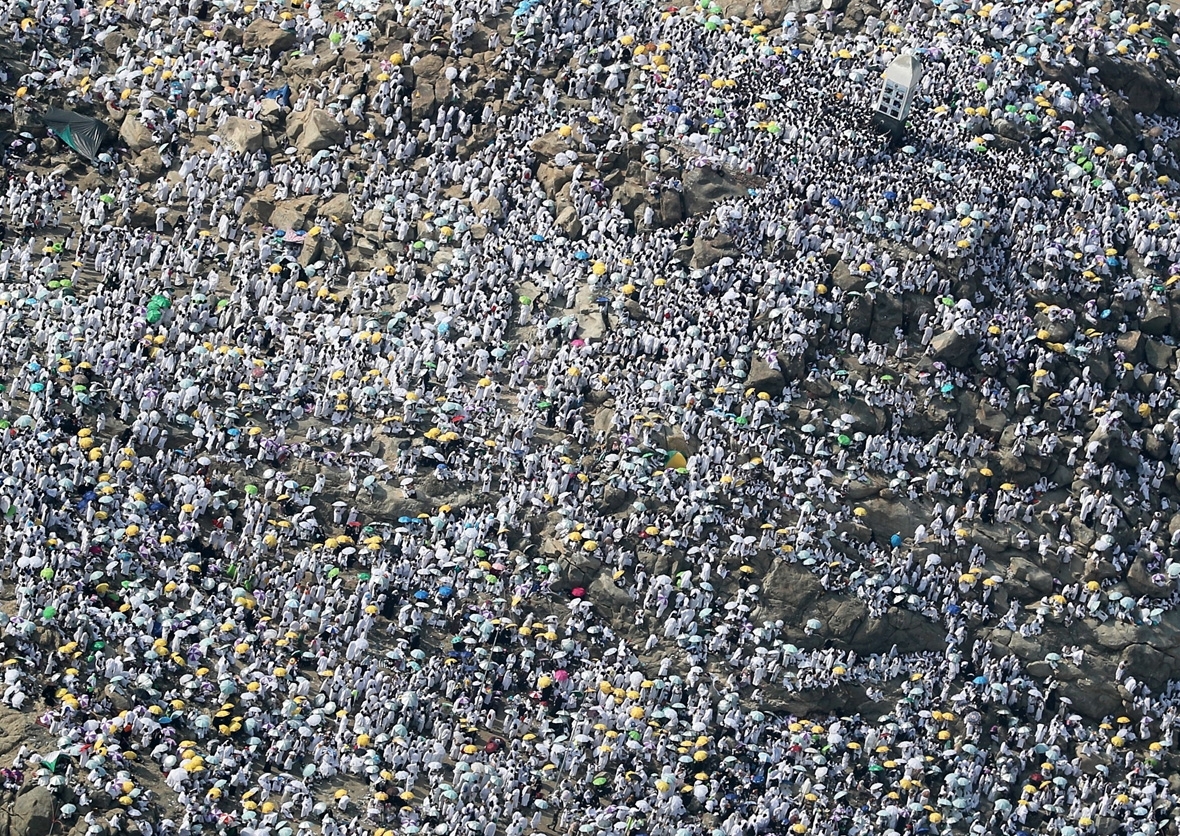Hajj 2017: Incredible aerial photos of two million Muslim pilgrims on Mount Arafat near Mecca
Two million Muslims from around the world gathered at Mount Arafat on the outskirts of the holy city of Mecca.
Two million Muslims from around the world gathered at Mount Arafat on the outskirts of the holy city of Mecca on Thursday (31 August) for a vigil to atone for their sins and ask God's forgiveness as the annual hajj pilgrimage reaches its climax.
Mount Arafat, also known as Mount of Mercy (Jabal ar-Rahmah), is a small granite hill about 70 metres (230 feet) high. Incredible aerial photos show huge crowds of pilgrims, from more than 160 countries, covering the hill and the surrounding plain. Almost all are dressed in plain white garments, meant to symbolise unity among Muslims, humility and equality before God. Many carry umbrellas to shelter from the sun as temperatures approached 40 degrees Celsius (104°F).




From dawn until dusk, the massive crowd of people will spend the day in supplication and contemplation on the hill where the Prophet Muhammad delivered his final sermon more than 1,400 years ago. In his sermon, the prophet called on his followers to repay their debts, beware of Satan, perform five daily prayers, fast during the month of Ramadan and give to charity. He also called on those with the means to perform the hajj once in a lifetime.


By sunset they will move to the rocky plain of Muzdalifa to gather pebbles, which they will throw at stone walls symbolising the devil the following morning. Male pilgrims will shave their hair and women will cut a lock of hair in a sign of renewal for completing the hajj. Around the world, Muslims will mark the end of hajj with a celebration called Eid al-Adha.
More than two million pilgrims, most of them from outside Saudi Arabia, are in Mecca for the five-day ritual, a religious duty once in a lifetime for every able-bodied Muslim who can afford the journey. Many begin their pilgrimage by traveling to Medina, the site of both the Prophet Muhammad's first mosque and where he is buried.
The rites of the hajj, however, begin in Mecca, the site of Islam's holiest place of worship. There, pilgrims circulate the cube-shaped Kaaba and kneel in prayer facing it. The Kaaba represents the metaphorical house of God and the oneness of God in Islam. Observant Muslims around the world face toward the Kaaba during the five daily prayers. Saudi state television on Thursday showed a new kiswa, the cloth embroidered with verses from the Quran, being placed over the Kaaba. Pilgrims will return to pray there at the end of hajj.










The movement of such a large and diverse crowd of people in a short period of time in limited spaces is a logistical challenge for the Saudi government. Authorities have deployed more than 100,000 security forces to secure the hajj and assist pilgrims. Additional doctors, nurses, ambulances and mobile health centres are also deployed in the areas of hajj.



A crush in 2015 which killed hundreds occurred when two large groups of pilgrims arrived together at a crossroads in Mina, a few km east of Mecca, on their way to Jamarat. It was the worst disaster to strike hajj for at least 25 years.
© Copyright IBTimes 2025. All rights reserved.






















